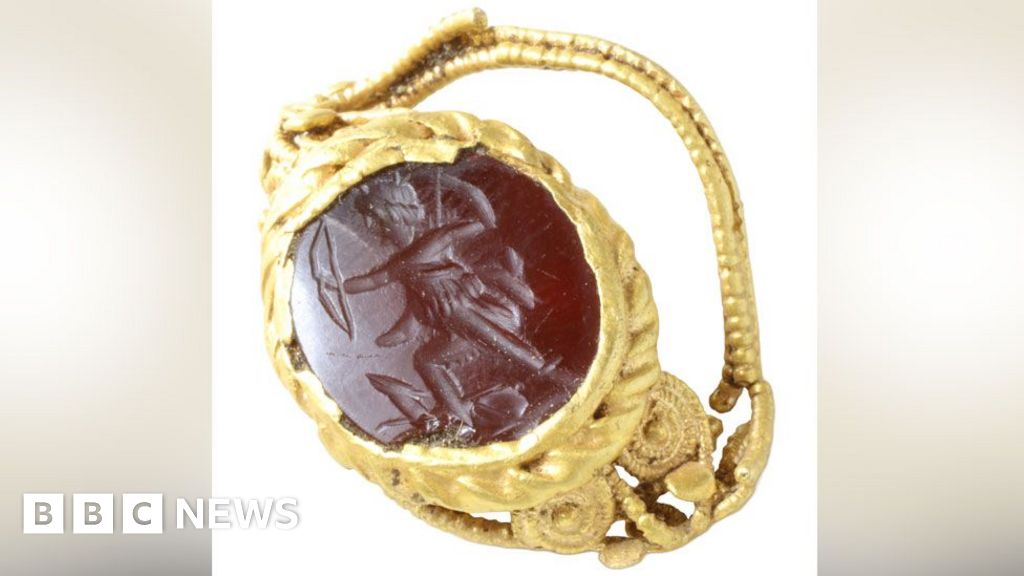
 PA Media
PA Media
Counting will start across the Republic of Ireland at 09:00 local time
Counting has begun in the Irish general election, as exit polls suggest a close contest between the three major parties.
Figures from Friday's exit poll show Sinn Féin slightly ahead of both Fine Gael and Fianna Fáil in first preference votes.
A record number of 174 Teachtaí Dála (TDs) are set to be elected, up from 160 in 2020 following a constituency shake-up.
There are now 43 Dáil constituencies (up from 39 in 2020) which will elect between three and five TDs each.
One seat in the Dáil goes to the Ceann Comhairle (Speaker), so 88 TDs is the number required for an overall majority.
More than 680 candidates competed for the remaining 173 seats.
The counting of votes at more than 40 centres across the Republic began at 09:00 local time, with the first results expected later in the afternoon.
What did Friday's exit poll say?


The exit poll shows a three-way race between the biggest parties
The figures, published at 22:00 local time, indicated that Sinn Féin has 21.1% of first preference votes, with Fine Gael having 21% and Fianna Fáil sitting in third with 19.5%.
It also suggested that 20% of the second preference votes goes to Fianna Fáil and Fine Gael, with Sinn Féin at 17%.
The exit poll was carried out by Ipsos B&A for RTÉ, The Irish Times, TG4 and Trinity College Dublin and was based on 5,018 completed interviews outside polling stations.
It has a margin of error of 1.4%.
The results also suggest a close battle between the smaller parties with less than 2% separating Labour, the Green Party and Social Democrats.
In the 2020 Irish general election, Sinn Féin secured 24.53% first preference votes, while Fianna Fáil obtained 22.18% and Fine Gael got 20.86%.
Support for independent candidates appears to have dropped, if the exit poll figures reflect the final result, from 15% in 2020 to 12%.
Analysis
If the exit poll is right, Sinn Féin is on course to win the popular vote for the second general election in a row.
But just like in 2020 it has no clear path to power.
The outgoing coalition partners Fianna Fáil and Fine Gael are well-placed to have the numbers needed to return to the government benches with the support of a smaller party.
If the polls are correct the pair could return with between 75 and 80 seats which will leave them just short of the 88 needed for an overall majority.
Sinn Féin will hope it performs better than the poll suggests, as it did in 2020.
But it may not be enough to form the coalition of left-leaning parties excluding Fine Gael and Fianna Fáil.

 Reuters
Reuters
Sinn Féin is on course to win the popular vote for the second general election in a row
Emerging trends
BBC News NI's Aoife Moore in Dublin
Early tallies are predicting an upset for some government ministers.
Although not all boxes are open, trends are beginning to emerge.
In Wicklow, which has four seats, Health Minister Stephen Donnelly is in fifth place.
Health had been a hot topic in the election campaign as waiting lists continue to rise.
Taoiseach (Irish prime minister) Simon Harris is in the same constituency and is leading the way in early tallies.
In Dublin Mid-West, Minister for Children, the Green Party's Roderic O'Gorman, is in trouble at this early stage, currently in sixth place.
O'Gorman had been put in the unenviable position of having responsibility for asylum seeker integration and accommodation - something the current government struggled to get a handle on amid a misinformation campaign from the far right and lack of available beds for refugees.
Meanwhile, Sinn Féin leader Mary Lou McDonald is likely to take the first seat in the Dublin Central constituency.
Social Democrat Gary Gannon and Fine Gael minister Paschal Donohoe also look safe in their seats.
The final seat looks likely to be a close race between the Labour Party senator Marie Sherlock and Independent candidate Gerard Hutch.
How the votes will be counted
The Republic of Ireland elects its government using a system of proportional representation known as the single transferable vote.
Voters rank candidates in their constituency in order of preference and candidates have to reach a certain number of votes in order to be elected.
Counting the ballots takes place in multiple rounds.
Each ballot is initially credited to the first choice.

 PA Media
PA Media
Once a candidate receives the number of votes required, they are elected and any remaining ballots that are marked with them as first choice are transferred to the second ranked preferences.
Ballots continue to be transferred to the next usable preference until all of the seats in the constituency are filled with candidates who have reached the quota.
Once all the seats are filled, the next phase of the process will begin, the task of forming a new government.
When will the results be known?
Due to the voting system, counting can sometimes last multiple days, and forming a government can take even longer.
It took four months after the last general election in 2020 before Fianna Fáil, Fine Gael, and the Green Party reached a deal to form a government.
Sinn Féin became the leading opposition party, and Fianna Fáil and Fine Gael have both already ruled them out as a potential coalition partner.
The first meeting of the new Dáil (lower house of parliament) is on 18 December but it is unlikely coalition negotiations will have finished by then.
A government will be officially formed when the Dáil passes a vote to install a new Taoiseach (Irish prime minister), but this isn't expected to take place before 2025.

 4 weeks ago
2
4 weeks ago
2















 English (US) ·
English (US) ·